SpringBoot+ThreadPoolTaskExecutor+mybatis-plus 多线程批量插入大数量级数据
方法一、 saveBatch()首先mybatis-plus中默认提供了一个批量保存数据到数据库的方法saveBatch(),批处理实质上还是一条条的sql去执行,但是它做了预编译优化,只编译一次sql,但是还是一个for循环,一条执行一次,数据量多的时候,效率也不见得很好。方法二、foreach拼sql这个也挺简单,就是,写法网上百度一大把,不做赘述。我这里是使用了mybatis-plus注入自
SpringBoot+ThreadPoolTaskExecutor+mybatis-plus 批量插入大数量级数据
创作不易,可否给作者点个赞再走
一. 效率
参考:https://www.jianshu.com/p/255095b274fe
方法一、 saveBatch()
首先mybatis-plus中默认提供了一个批量保存数据到数据库的方法saveBatch(),批处理实质上还是一条条的sql去执行,但是它做了预编译优化,只编译一次sql,但是还是一个for循环,一条执行一次,数据量多的时候,效率也不见得很好。

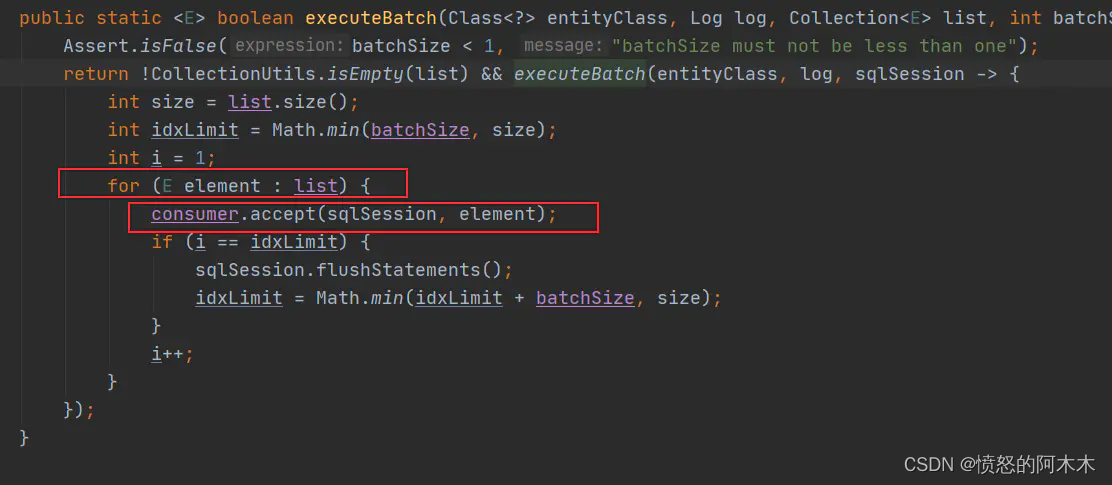

方法二、foreach拼sql
这个也挺简单,就是,写法网上百度一大把,不做赘述。
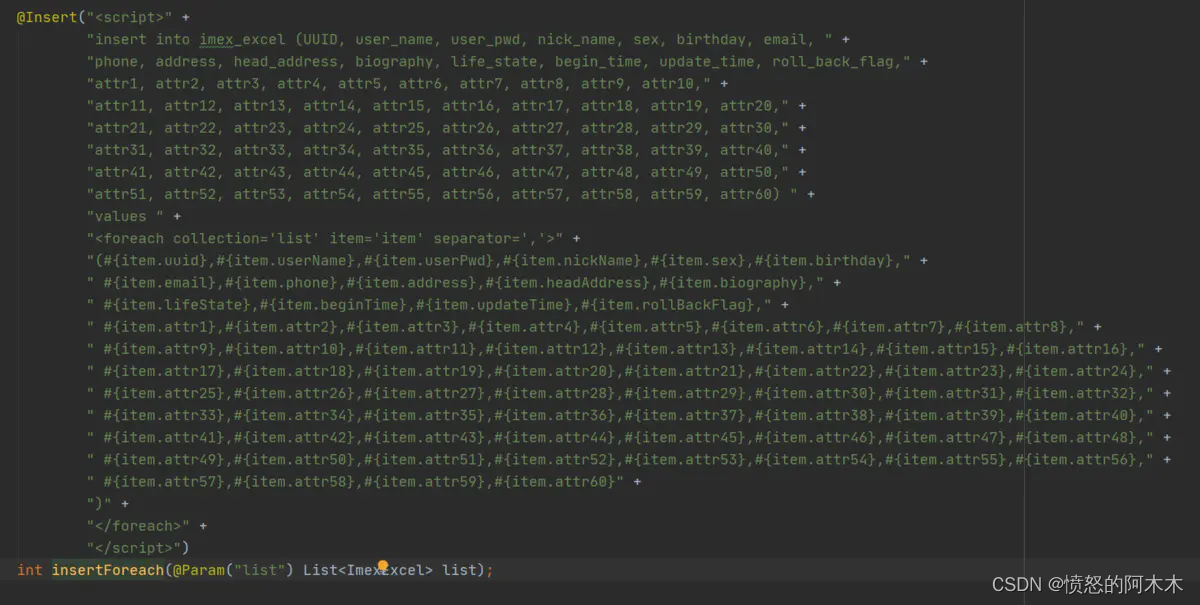
我这里是使用了mybatis-plus注入自定义的SQL,方法参考
https://www.yht7.com/news/194845
https://blog.csdn.net/qq_28025423/article/details/115680196
我使用的数据库是Oracle,所以sql有一点点不同
详细代码见:https://blog.csdn.net/qq_44364267/article/details/127111440
insert into tablename(···)
<foreach collection="list" item="item" index="index" open="" separator="union all" close="">
(SELECT ····FROM DUAL )
</foreach>
在使用过程中发现由于插入表的字段太多了,拼接的插入值的时候总会卡上那么一下,再加上这玩意还有数量限制(一次性插入2000以上条会报错),所以这个时候会适得其反,效率下降。
结论:
1、BATCH模式当字段比较少的时候,效率比不过foreach一次性执行效率高。
2、foreach用在字段比较少的表插入时候,性能比BATCH模式好
我自己也实际的去测试了一下,插入一万条数据,对比图如下
这是使用saveBatch()方法,花了六秒

而foreach,花了三十多秒(截图忘了截了哈哈,但是有印象),好家伙这还是使用了多线程的情况下(多线程下文讲)。所以果断还是使用saveBatch(),但是考虑到这玩意其实也是循环一条条的跑,因此决定使用多线程。
二. ThreadPoolTaskExecutor多线程插入数据
根据实际需求,需要插入W及10W以上的数据,而且因为插入的字段有点多,所以还是考虑使用saveBatch()方法,因此考虑使用ThreadPoolTaskExecutor多线程批量插入提高效率。
- 首先是spring容器注入线程池bean对象
import org.springframework.context.annotation.Bean;
import org.springframework.context.annotation.ComponentScan;
import org.springframework.context.annotation.Configuration;
import org.springframework.scheduling.annotation.AsyncConfigurer;
import org.springframework.scheduling.annotation.EnableAsync;
import org.springframework.scheduling.concurrent.ThreadPoolTaskExecutor;
import java.util.concurrent.Executor;
@Configuration
@EnableAsync
@ComponentScan("com.example")
public class AsyncConfig implements AsyncConfigurer {
@Override
@Bean("AsyncExecutor")
public Executor getAsyncExecutor() {
ThreadPoolTaskExecutor threadPool = new ThreadPoolTaskExecutor();
//返回可用处理器的Java虚拟机的数量,可以根据数量设定线程参数,我这里直接写死了
int i = Runtime.getRuntime().availableProcessors();
//设置核心线程数
threadPool.setCorePoolSize(10);
//设置最大线程数
threadPool.setMaxPoolSize(100);
//线程池所使用的缓冲队列
threadPool.setQueueCapacity(10);
//等待任务在关机时完成--表明等待所有线程执行完
threadPool.setWaitForTasksToCompleteOnShutdown(true);
// 等待时间 (默认为0,此时立即停止),并没等待xx秒后强制停止
threadPool.setAwaitTerminationSeconds(60);
// 线程名称前缀
threadPool.setThreadNamePrefix("系统名-Async-");
// 初始化线程
threadPool.initialize();
return threadPool;
}
}
- 第二步创建异步线程的业务类
接口
import java.util.List;
import java.util.concurrent.CountDownLatch;
/**
* @author shidulin
* @version 1.0
* @date 2022/9/29 8:46
*/
public interface AsyncService {
/** * 执行异步任务 * 可以根据需求,自己加参数拟定,我这里就做个测试演示 */
void asyncBatchInsertCatalog( CountDownLatch countDownLatch, List<PurStoreProductsCatalog> catalogList);
}
实现类
/**
* @author shidulin
* @version 1.0
* @date 2022/9/29 8:45
*/
@Service
@Slf4j
public class AsyncServiceImpl implements AsyncService{
@Override
@Async("AsyncExecutor")
public void asyncBatchInsertCatalog( CountDownLatch countDownLatch, List<PurStoreProductsCatalog> catalogList) {
try{
log.warn("start Batch Insert");
//每个线程要做的操作
log.warn("end Batch Insert");
}finally {
// 很关键, 无论上面程序是否异常必须执行countDown,否则await无法释放
countDownLatch.countDown();
}
}
}
- 第三步测试调用
业务类内容太多了这里就只贴出具体方法
@Override
public String importProductsCatalog() {
//将json字符串转为JSONObject
JSONObject catalog = JSON.parseObject(catalogstr);
//catalogJSONArray大小是10
JSONArray catalogJSONArray = catalog.getJSONArray("catalog");
List<PurStoreProductsCatalog> catalogList = (List<PurStoreProductsCatalog>) JSONArray.parseArray(catalogJSONArray.toJSONString(), PurStoreProductsCatalog.class);
//造假数据10*1000条数据
for(int i = 0 ; i < 1000 ; i ++) {
catalogList.addAll(catalogList.size()-1,(List<PurStoreProductsCatalog>) JSONArray.parseArray(catalogJSONArray.toJSONString(), PurStoreProductsCatalog.class));
}
// 异步多线程 插入数据库
int total = catalogList.size();
//两千条数据开一条线程
int batchSize = 2000;
int number =total % batchSize == 0 ? total / batchSize :total / batchSize+1;
countDownLatch = new CountDownLatch(number);
long l1 = System.currentTimeMillis();
for(int i = 0;i<number;i++){
List<PurStoreProductsCatalog> batchList = new ArrayList<>();
if(i== number-1){
batchList = catalogList.subList(i*batchSize,total);
}else{
batchList = catalogList.subList(i*batchSize,(i+1)*batchSize);
}
//模拟阻塞队列,线程满的时候等待不抛出异常
while(true){
try{
asyncService.asyncBatchInsertCatalog(countDownLatch,batchList);
break;
}catch(TaskRejectedException e){
try{
Thread.sleep(1000);
}catch(Exception e2){}
}
}
}
try {
countDownLatch.await();
} catch (InterruptedException e) {
throw new RuntimeException(e);
}
long l2 = System.currentTimeMillis();
log.info("主线程阻塞执行到此处花费了{}",l2-l1);
return "获取库存成功";
}
测试结果,一万条数据大约4s,没加线程的话7秒(虽然4s一万条数据还是有点慢,但是也没办法不想自己写sql哈哈,而且foreach在这里也不适用)

用foreach的话加上线程差不多38s了。
这是主表的,实际上主表一条数据对应附表3条数据左右,一开始我是一条线程插入主表的同时也把插入附表的操作也做了,用的都是savebatch()。结果让我大失所望,1W条主表数据+3W条附表数据整整花了27s左右
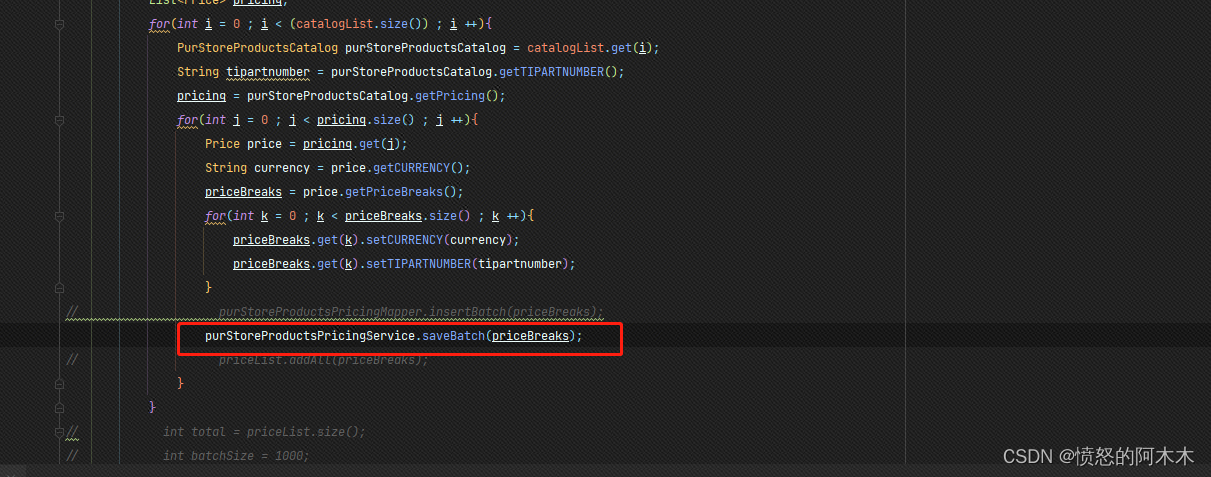

这个时候foreach就适用了,附表字段少只有4个,速度直接飙到4S。
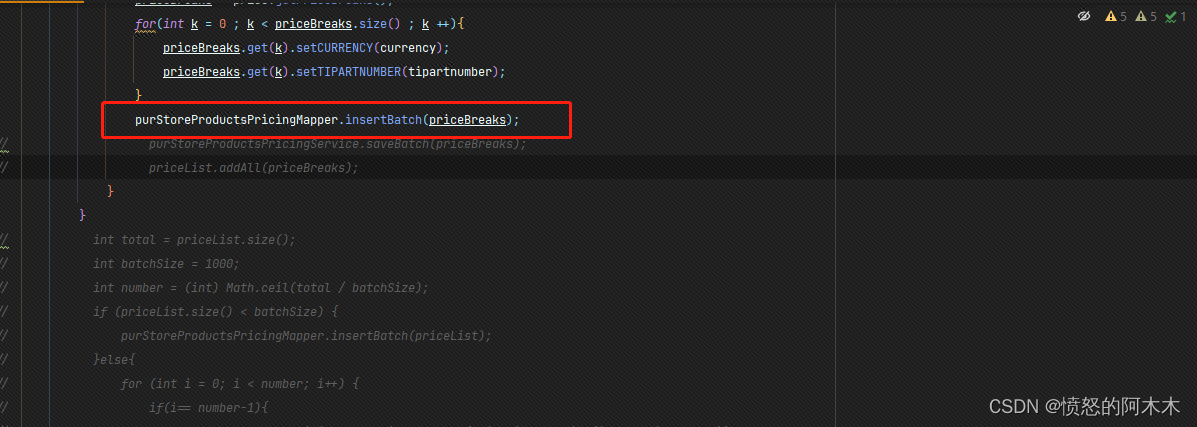
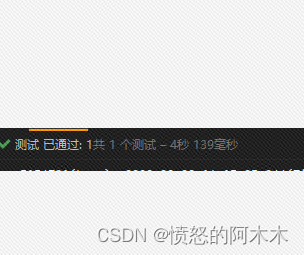
这里跟前面只插入1W条主表数据差不多是因为优化了中间数据处理逻辑,但是没有做测试记录,大约1W条应该是1~2s左右
三. 测试结果
- 1W条主表数据+3W条附表数据测试结果见上文,4s左右
- 10W条主表数据+30W条附表数据测试结果见上文,13s左右
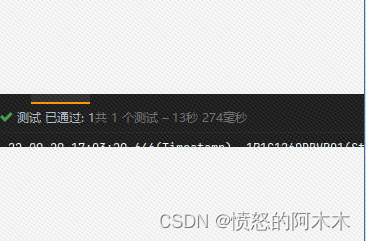
- 100W条主表数据+300W条附表数据测试结果见上文,1分45s左右

这里在测试百万级数据时线程满了,因为我是2000条一个线程,100W / 2000 = 500,线程最大设置的时100个,这里我们并不能无限去扩大设置的线程数,spring boot的阻塞队列不好用,所以模拟了一下
//模拟阻塞队列,线程满的时候等待不抛出异常
while(true){
try{
asyncService.asyncBatchInsertCatalog(countDownLatch,batchList);
break;
}catch(TaskRejectedException e){
try{
Thread.sleep(1000);
}catch(Exception e2){}
}
}
四. 结论
需要根据实际需求去选择批量插入的方法,根据实际对比性能过后才能得出最优解
更多推荐
 已为社区贡献1条内容
已为社区贡献1条内容









所有评论(0)